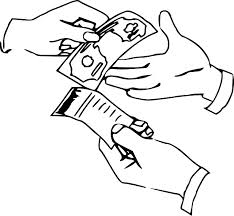Why do people say “yes” to your offer? Any time there is an ask for something, whether you are asking people to purchase something, give you something or to do something, the person can either say “yes” or “no.”
In this short article, I will explain the conversion heuristic and how it can help you optimize your online marketing efforts and get to more yes(s.)
What is a conversion?
 Definition — Conversion: noun. The act or process of changing from one form, state, etc., to another[1]. If you are a marketer, it is your primary responsibility to help convert a prospect’s interest into an action.
Definition — Conversion: noun. The act or process of changing from one form, state, etc., to another[1]. If you are a marketer, it is your primary responsibility to help convert a prospect’s interest into an action.
There are many different actions a marketer may wish the prospect take, such as entering their information into a contact form, subscribing to an email newsletter or making a purchase.
When your prospect is presented with your request to do something, they can say “yes” or “no.” If the prospect says “yes” to your request and they take action, a conversion has occurred.
What is the conversion heuristic?
 Definition — Heuristic: adjective. Involving or serving as an aid to learning, discovery or problem-solving by experimental and especially trial-and-error methods (heuristic techniques)[2].
Definition — Heuristic: adjective. Involving or serving as an aid to learning, discovery or problem-solving by experimental and especially trial-and-error methods (heuristic techniques)[2].
The MECLABS Conversion Heuristic is a process to help marketers discover the factors affecting their conversions.
The conversion heuristic and its counterparts have been patented and copyright protected by United States Patent and Trademark Office, but I am going to reveal its value to you today for free.
The conversion heuristic looks like this:
C = 4m + 3v + 2(i – f) – 2a
C = Probability of conversion
m = Motivation of the prospect
v = Force of your value proposition
i = Incentive
f = Friction
a = Anxiety
There you go. You now have a basic formula to help you discover why your prospects say “yes.”
Apply this conversion heuristic to your digital marketing to increase your conversion rates and get more yes(s.) I’ve already written a MarketingExperiments Blog post on the anxiety element, and future blog posts will go into more detail on other elements of the MECLABS Conversion Heuristic.
[1] Conversion. (n.d.). Retrieved November 19, 2014, from
http://www.merriam-webster.com/dictionary/conversion
[2] Heuristic. (n.d.). Retrieved November 19, 2014, from
http://www.merriam-webster.com/dictionary/heuristic
Images Courtesy of: Pixabay, Uspto
You might also like
A/B Testing: How to improve already effective marketing (and win a ticket to Email Summit in Vegas) [More from the blogs]
Customer Anxiety: One element of the MECLABS Conversion Heuristic explained [More from the blogs]
Marketing Research Chart: Conversion rates on organic traffic [MarketingSherpa chart]
Marketing 101: What is conversion? [More from the blogs]
Email Marketing: 208% higher conversion rate for targeted emails over batch-and-blast [MarketingSherpa case study]




Hi Josh,
I would like to learn how you revealed this conversion heuristic formula?
Naturally, it is not algorithmical formula but i am sure that you have enough resource to convert this ”heuristic” issue into ”algorithmic” issue with statistical deviation.
May i ask why you don’t try this way?
Thank you.
Özenç Kılıçcıoğlu
Thank you for your question Özenç,
This heuristic is not a formula that will give you absolutes because some things can not be quantified, for example motivation. As of this publication release, we can not collect, measure, and then place a number of all the customers arriving to a page or marketing material.
We can however use this heuristic to identify elements on the page which need to be tested and adjusted to positively impact conversions.